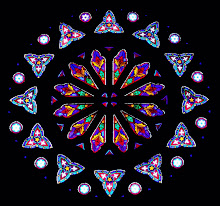
The excerpt quoted above is from Chopin’s Ballade No. 3 in A flat major, op. 47, measures 33 - 36 [6/8 meter, Allegretto]. The entire passage, except for the last two notes in measure 36, is in C major, notwithstanding the key signature of 4 flats. Chopin has modulated to the diatonically unrelated key of the mediant major, or major III. A flat major and C major do have a relationship, however: they are both related to C minor. Also, the common tone C is in both keys. On the downbeat of measure 37, the music is back in A flat major.
What is particularly wonderful about this excerpt is that in the time span of exactly one measure - from the downbeat of m. 35 to the downbeat of m. 36 - Chopin traverses the complete range of the piano of his time. We should try to visualize a keyboard whose range is C1 to F7 - a total of 8 3/8" narrower than today’s 88-key range, and then imagine Chopin presiding over it and knowing that he can’t go any further down or up than its almost 6½-octave range would allow. Chopin probably didn’t give it a second thought. His magnificent oeuvre is a testament to how the range limitations of a musical instrument can be transformed into the most beautiful aesthetic and structural/design enhancements, but only in the hands of a genius.
There are some noteworthy dissonances in the excerpt: m. 33, beat 2 and again on the downbeat of m. 35 - F [RH] appoggiatura against E natural [LH]; m. 34, beat 1 - D natural [RH], also an appoggiatura; beat 2 - five of the seven white key pitches - from bass up - G, C, F, E and A. The logical explanation is: the F in the LH is an accented upper neighboring tone, while the A in the RH is an appoggiatura - all within the prevailing tonic harmony of C major. Chopin probably didn’t give any of this a second thought either.

No comments:
Post a Comment